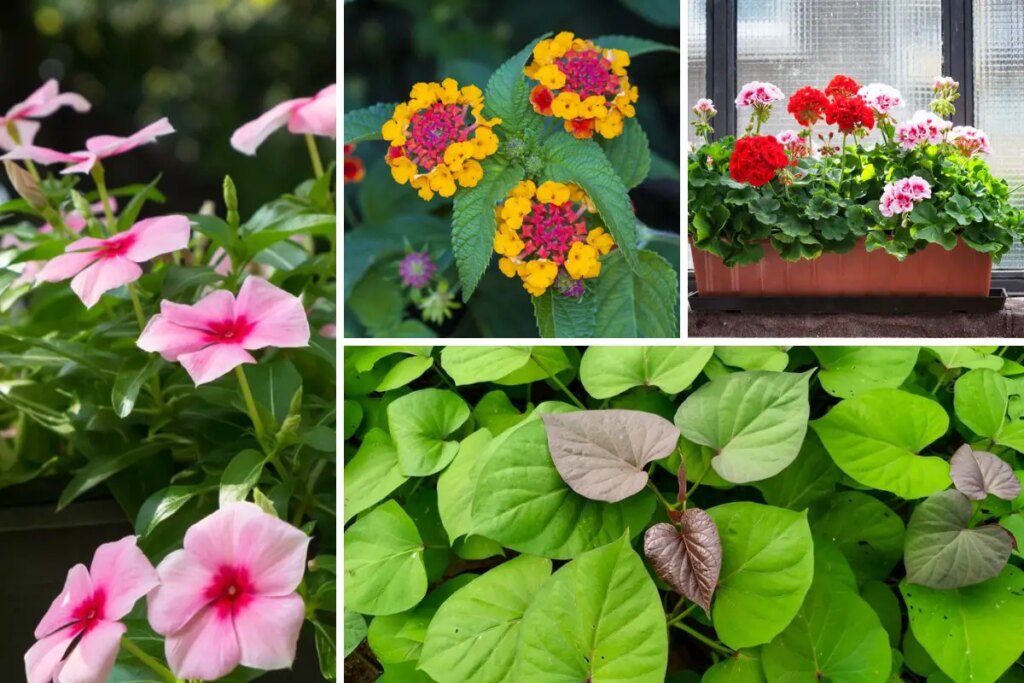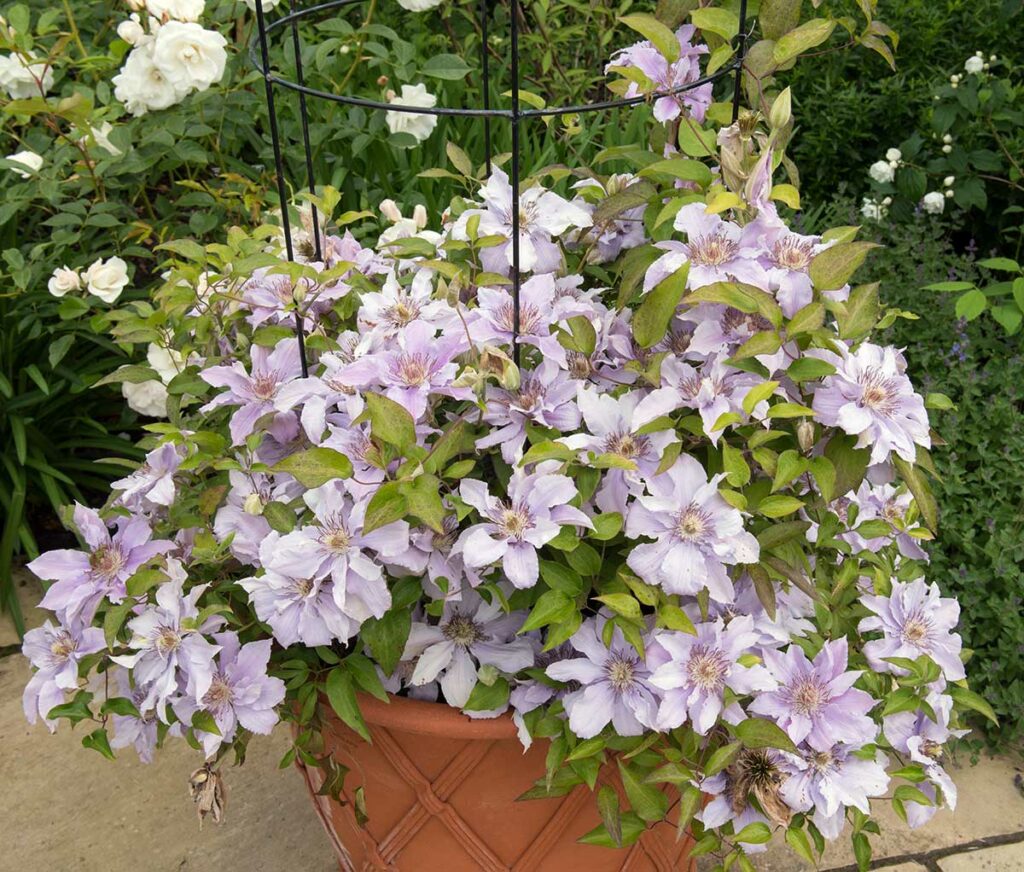
Geraniums are a popular choice for many gardeners due to their vibrant colors and ease of care. Fertilizing your geraniums is an essential step to ensure their healthy growth and to maintain their beautiful appearance throughout the season.
In this article, we will discuss some tips to help you achieve great results when fertilizing your geraniums.
It’s important to know that geraniums have specific nutrient requirements and using the right type of fertilizer can make all the difference in your plants’ performance.
A balanced fertilizer, especially one with a higher phosphorus content, will encourage more abundant blooms and sturdy growth.
Timing is also crucial when it comes to fertilizing; applying the fertilizer at the optimal moment will ensure your plants’ nutrient needs are met for flourishing success.
In addition, getting familiar with the proper techniques for application and monitoring your plants’ health will help your geraniums thrive. By following the tips presented in this article, you will be well-equipped to support the growth and beauty of your geraniums for the entire season.
Choosing the Right Fertilizer

When it comes to fertilizing geraniums, finding the right fertilizer is essential. There are two main categories to consider: organic and synthetic options. Let’s dive into each one and explore their benefits.
Organic Options
Organic fertilizers are derived from natural sources such as animal manure, compost, or seaweed. They release nutrients slowly, helping to build your geranium’s overall health. Some popular organic choices include:
- Fish emulsion: Rich in nitrogen, fish emulsion is a common choice for promoting leafy growth in geraniums. Use it once every two weeks.
- Composted manure: A source of essential nutrients, composted manure improves soil structure, making it easier for your geraniums to absorb nutrients. Apply it once or twice in the growing season.
- Seaweed extract: Known for its high potassium content, seaweed extract is excellent for supporting flower development in geraniums. Apply it every two weeks as a foliar spray.
Synthetic Options
On the other hand, synthetic fertilizers are chemically formulated to provide a specific balance of nutrients. They offer consistent results and are available in various formats, such as granular or liquid forms. You can choose:
- Water-soluble fertilizer: A balanced formula like 20-20-20 (indicating equal parts of nitrogen, phosphorus, and potassium) is ideal for geraniums. Mix the recommended amount with water and apply it every two weeks.
- Slow-release granules: These granules release nutrients over time, providing consistent nourishment to your geraniums. Apply according to the product instructions, usually once every few months.
To ensure your geraniums thrive, consider the specific needs of your plants and your gardening goals when selecting a fertilizer. No matter which option you choose, always follow the product’s instructions and avoid over-fertilizing to prevent detrimental effects on your plants.
Frequency of Fertilizing

When it comes to fertilizing geraniums, moderation is key. It’s generally recommended to fertilize your geraniums once a month during the growing season, which is April to September for most regions. This frequency ensures that your geraniums receive the necessary nutrients to produce vibrant blooms without over-fertilizing and causing damage.
Remember that your geraniums have different requirements during the stages of their life cycle. For the most effective results, you should adjust the frequency accordingly:
- Young geraniums: When your geraniums are first planted and developing their root systems, they require less fertilization. You can start fertilizing them once every six weeks.
- Established geraniums: As your plants mature, their need for nutrients increases to support blooming. At this stage, transition to fertilizing once a month.
- Overwintering geraniums: If you’re overwintering geraniums indoors, they will have limited growth, and you should minimize fertilizing. Apply a half-strength solution once every two months during this period.
Regular watering is also important for geranium growth. To avoid overwatering, aim for one inch of water a week. This amount can vary depending on your climate, so adjust accordingly. Too much water may lead to root rot, while too little can cause the plant to wilt.
Pay attention to the appearance of your geraniums as well. Signs of over-fertilization may include:
- Yellowing leaves
- Brown leaf tips or margins
- Weak, elongated stems
If you notice any of these symptoms, cut back on the amount or frequency of fertilization to avoid further damage. Following these tips on the frequency of fertilizing will help ensure your geraniums grow healthy and produce beautiful blooms.
Application Techniques
Liquid Feeding
Liquid feeding is a convenient method to fertilize your geraniums. To apply liquid fertilizer, mix the recommended amount with water in a watering can or a sprayer. Make sure to follow the manufacturer’s instructions to avoid overfeeding. Water your geraniums evenly, ensuring that the fertilizer reaches the roots. It’s preferable to apply liquid fertilizer every two weeks during the growing season for best results.
Granular Fertilizers

Granular fertilizers offer a simple way to feed your geraniums. Begin by measuring out the appropriate amount according to the label. Next, sprinkle the granules evenly over the soil around your geranium plants. Be cautious not to allow the granules to touch the plant stems, as this can cause damage. When finished, thoroughly water the area to help the fertilizer dissolve and reach the roots. Apply granular fertilizer once a month during the growing season.
Slow-Release Options
Slow-release fertilizers are a low-maintenance choice for your geraniums. These fertilizers release nutrients gradually over time. To apply, scatter the recommended amount around the base of each geranium, keeping it away from the stems. Then, lightly mix the fertilizer into the top layer of the soil using a garden fork or your hands. Water the area well to activate the slow-release fertilizer. Typically, slow-release fertilizers need to be applied only once or twice during the growing season.
Special Considerations
Potted Geraniums

When fertilizing your potted geraniums, it’s important to pay attention to the type of fertilizer you’re using and the specific needs of the plant. Potted geraniums have different requirements compared to their in-ground counterparts.
Firstly, choose a well-balanced, water-soluble fertilizer. This ensures your geraniums receive essential nutrients. A slow-release fertilizer specifically designed for potted plants is ideal. Use a formula like 20-20-20 or 10-10-10. This provides an even ratio of nitrogen, phosphorus, and potassium – the primary nutrients your geraniums need.
Fertilizing Frequency: Potted geraniums typically require fertilization every 4-6 weeks during the growing season. Begin fertilizing in early spring and continue through summer, reducing the frequency as temperatures cool in autumn.

Watering Considerations: Ensure your potted geraniums have proper drainage before applying fertilizer. Overwatering and poor drainage can lead to root rot, which may harm or even kill your plants. Water your geraniums thoroughly before applying fertilizer, and then apply the fertilizer to damp soil. This helps nutrients absorb evenly and prevents overconcentration.
Monitor Growth: Keep an eye on your geranium’s growth and foliage. Yellow leaves or stunted growth may indicate it’s time to fertilize. However, excess fertilizer can cause foliage to be lush but with fewer flowers. Adjust your fertilization schedule according to your plant’s needs.
Remember to enjoy the process of tending to your potted geraniums. By considering these special tips, you can help your plants flourish both in health and beauty.













